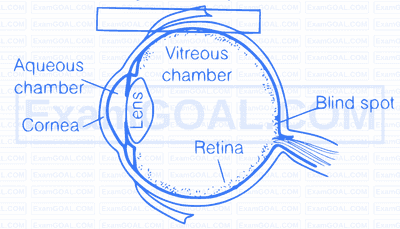24
What is the difference between electrical transmission and chemical transmission?
Explanation
Differences between electrical transmission and chemical transmission are as given below
| Electrical Transmission | Chemical Transmission |
|---|---|
| It occurs at electric synapse. | It occurs at chemical synapse. |
| Synaptic cleft may or may not be present. | synaptic cleft is present. |
| At electrical synapses, electrical current can flow directly from one neuron into the other across these synapses. | At chemical synapse, neurotransmitter from pre-synaptic neurons transfer to post-synaptic neurons leading to transmission of impulse. |
| Impulse transmission across an electrical transmission is always faster. | Chemical transmission is slower. |
25
Neuron system and computers share certain common features. Comment in five lines.
Explanation
The sensory neurons present in various organs sense the environment and extend the message to the brain. So, it is equivalent to input device of computers.
Brain acts as CPU, i.e., Central Processing Unit. The information gathered by sensory neurons is processed by brain and it gives command to the concerned organ to act accordingly. This message is taken or conveyed by motor neurons which act as output devices.
26
If someone receives a blow on the back of neck, what would be the effect on the person's CNS?
Explanation
If a person receives a blow on the back, then it will lead in an impairment of cognitive abilities or physical functioning. It can also result in the disturbance of behavioural or emotional functioning. Cervical injuries often lead to quadriplegia (tetraplegia).
27
What is the function described to Eustachian tube?
Explanation
The eustachian tube connects the middle ear cavity with the pharynx. It helps in equalising the pressures on either sides of the ear drum. At the pharyngeal opening of the Eustachian tube, is a valve which normally remains closed.
The valve opens during yawning, swallowing and during an abrupt change in altitude, when air enters or leaves the tympanic cavity to equalise the pressure of air on the two sides of the tympanic membrane.
28
Label the following parts in the given diagram using arrow.
(a) Aqueous chamber (b) Cornea (c) Lens (d) Retina (e) Vitreous chamber (f) Blind spot

Explanation
Representation of the following parts of eye
